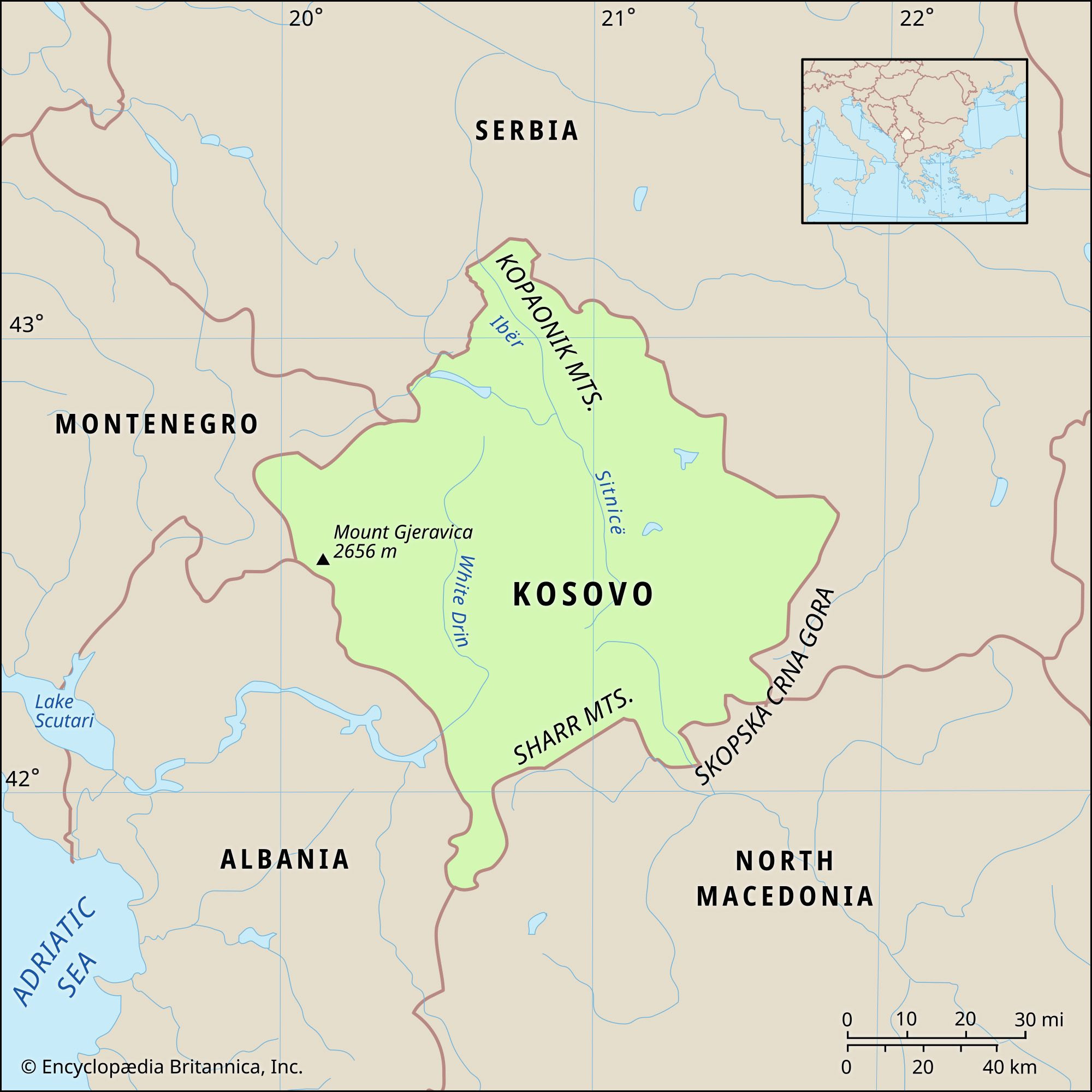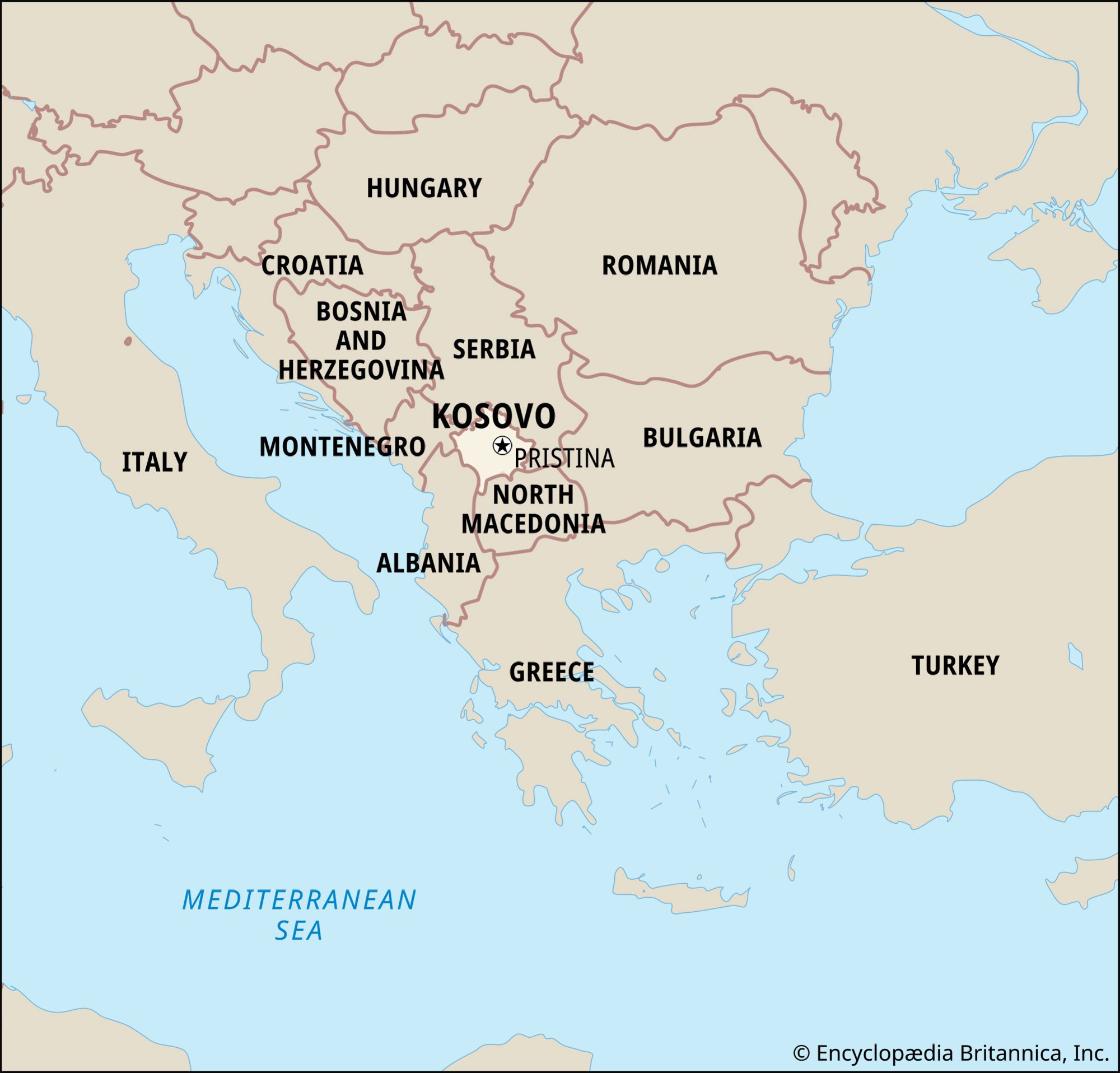Kosovo, a self-declared independent country, is nestled in the heart of the Balkans, a region in Southeast Europe steeped in history and cultural diversity. Understanding Where Is Kosovo requires pinpointing its location within this dynamic European landscape and recognizing its geographical neighbors. Although its independence remains a subject of international debate, with Serbia still claiming it as part of its territory, Kosovo functions as a distinct entity with its own governance and identity.
Geographical Location and Borders of Kosovo
To answer definitively “where is Kosovo?”, we need to look at its geographical coordinates and bordering countries. Kosovo is a landlocked nation, meaning it is entirely surrounded by land and has no direct access to the sea. It is situated in the central Balkan Peninsula and shares borders with several countries:
- North and East: Serbia forms Kosovo’s border to the north and east. This border is particularly significant due to the ongoing political tensions between Kosovo and Serbia.
- South: North Macedonia lies to the south of Kosovo.
- West: Albania is located to Kosovo’s west, sharing cultural and ethnic ties with Kosovo’s majority Albanian population.
- Northwest: Montenegro completes Kosovo’s bordering nations to the northwest.
Being in the Balkans places Kosovo at a crucial crossroads of European history and culture. The region has been shaped by various empires and migrations, contributing to its diverse ethnic and religious makeup. Kosovo’s central location within the Balkans also makes it a significant point in regional transportation and cultural exchange.
A Brief Historical Context
Understanding “where is Kosovo” also involves acknowledging its historical journey. Historically, Kosovo was central to the medieval Serbian Empire. Later, it spent centuries under the rule of the Ottoman Empire, which profoundly influenced its cultural and religious landscape, notably contributing to the growth of Islam in the region. In the 20th century, Kosovo became part of Serbia and subsequently Yugoslavia. Ethnic tensions between the Serb and Albanian populations escalated in the late 20th century, culminating in the Kosovo War in the late 1990s. Following a period of UN administration after the war, Kosovo declared its independence in 2008. This declaration, while recognized by many Western nations, remains contested by Serbia and others, shaping Kosovo’s current international status.
Landscape and Climate of Kosovo
Kosovo’s physical geography is characterized by its mountainous borders and interior plains. The country’s terrain is diverse, featuring:
- Mountains: The Sharr Mountains rise along the southern border with North Macedonia, and the Kopaonik Mountains are to the northeast, bordering Serbia. Mount Gjeravica, Kosovo’s highest peak, stands on the western border with Albania.
- Plains: The interior consists of high plains and rolling hills, with the fertile Kosovo Plain in the east and the Dukagjin Plain in the west, crucial for agriculture.
- Rivers: The Sitnicë River drains the Kosovo Plain, while the Drini i Bardhë (White Drin) flows through the Dukagjin Plain, contributing to the fertile lands.
 Map showing physical features of Kosovo
Map showing physical features of Kosovo
Kosovo experiences a moderate continental climate, influenced by the Mediterranean, especially in the southwest. Summers are warm, and winters are moderately cold with significant snowfall, particularly in the mountainous regions. The climate and fertile soils support a variety of agricultural activities and contribute to Kosovo’s natural beauty.
Biodiversity: Plant and Animal Life in Kosovo
Despite its small size, Kosovo is rich in biodiversity. Forests cover a significant portion of the land, with oak trees prevalent at lower altitudes and pines higher up in the mountains. The animal life is also diverse, including species like brown bears, lynx, wolves, foxes, deer, and chamois in the mountainous areas. Kosovo is also home to over 200 bird species, including the blackbirds that gave Kosovo Polje (“Field of Blackbirds”) its name, a site of historical importance.
People and Culture: Ethnic Diversity and Languages
The population of Kosovo is ethnically diverse, although predominantly Albanian. Significant demographic shifts occurred in the 20th century, leading to Albanians becoming the majority. Besides Albanians, other ethnic groups include Serbs, Bosniaks, Roma, Turks, and others. Serbs are mainly concentrated in northern Kosovo.
The official languages of Kosovo are Albanian and Serbian. Other languages like Turkish, Bosnian, and Romany are also officially recognized in certain municipalities, reflecting the multicultural fabric of the nation.
Conclusion: Kosovo’s Place in the World
In conclusion, where is Kosovo? Kosovo is located in Southeast Europe, in the Balkan Peninsula, bordering Serbia to the north and east, North Macedonia to the south, Albania to the west, and Montenegro to the northwest. It is a landlocked country with a rich history, diverse landscape, and a complex political status. Understanding its geographical location is key to appreciating its role in European geopolitics and its unique cultural identity. As Europe’s youngest nation, Kosovo continues to navigate its path on the international stage, striving for greater recognition and stability in a region with a vibrant past and an evolving future.


 Kosovo location in Europe
Kosovo location in Europe